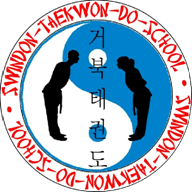



|
What I’ve discovered
Kim Yoo-Sin (595-673 A.D.) was a great general during the Silla dynasty.
As the son of a noble family (of the royal house of Kaya, he was said to have been the grand-child of the last Kaya king), he was selected for training as a Hwa-Rang at the age of fourteen and made a Kuk-Son at the age of eighteen.
Yoo-Sin was good friends with the crown prince Kim Ch’un-ch’u, who went on to become to become King Muyol, and Yoo-Sin’s brother-in-law.
At thirty-four years old Kim Yoo-Sin was commander of the Silla armed forces.
In 642 Silla suffered a military defeat when Paekche launched a last desperate attack; taking back some land previously belonging to the Kaya region.
It was when Silla asked Koguryo for help against Paekche that Kim Ch’un-ch’u who had been sent to on a diplomatic mission, found himself the captive of Yon Gae Somoon (see Yon-Gae).
Yoo-Sin was sent to Koguryo to arrange the release of Kim Ch’un-Ch’u.
Kim Yoo-Sin and Kim Ch’un-Ch’u secured the help of Tang China in their battle to unify Korea.
There are many stories of the great Hwa-Rang Kim Yoo-Sin and one of these tales describes the sword skills of Yoo-Sin; during an argument with a Chinese general, Yoo-Sin’s sword is said to have leapt from its scabbard into his hands, the Chinese general was so terrified by this that he apologised instantly.
In 660 A.D. Kim Yoo-Sin and the Chinese general Su Dingfang (also Su Ting-Fang?) met General Ge-Baek on the Hwangsan field, the 50,000 Silla and Tang forces defeated Ge-Baek and his 5000 men.
This may have been one of the last great battles of Yoo-Sin as it is sometimes reported that he was too old to do battle against Koguryo in 668 A.D.
Silla eventually unified Korea and drove out the Tang forces in 676 A.D.
Kim Yoo-Sin lived to be 78 years old and left behind ten children, he is one of Korea’s most famous generals and was posthumously awarded the honorary title of Heungmu Daewang, his tomb at the foot of Mount Song Hwa, is said to be a splendid as that of kings; and tells that he helped Moonmoo-Wang defeat Koguryo in 668 A.D. also going on to help repulse the Tang forces in the 670’s A.D.
(see also Hwa-Rang & Yon-Gae & Ge-Baek &Moon-Moo) |
|
In his encyclopaedia General Choi told us: This pattern is named after General Kim Yoo-Sin, a commanding general during the Silla Dynasty. The 68 movements refer to the last two figures of 668 A.D., the year Korea was finally united. The ready posture signifies a sword drawn on the right rather than left side, symbolizing Yoo-Sin's mistake of following his King’s orders to fight with foreign forces against his own nation. |